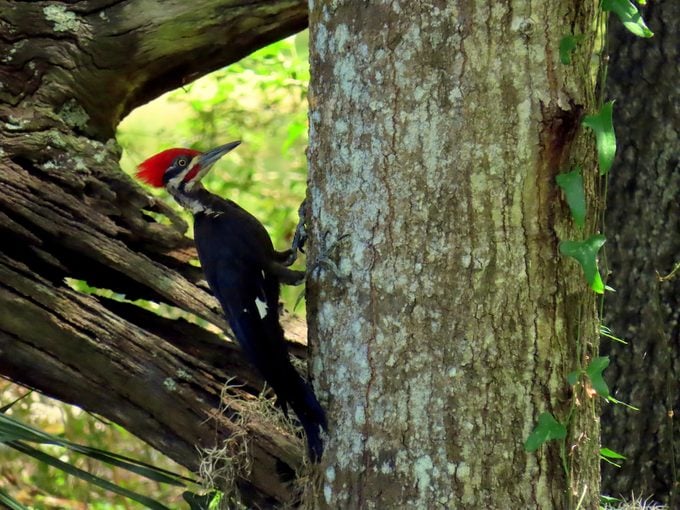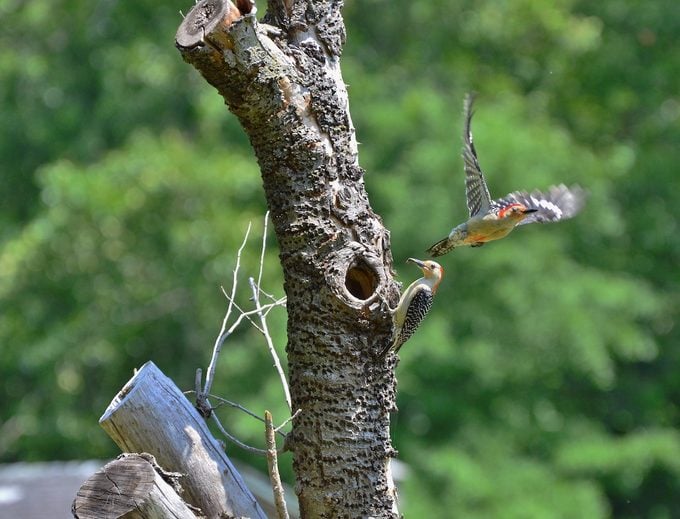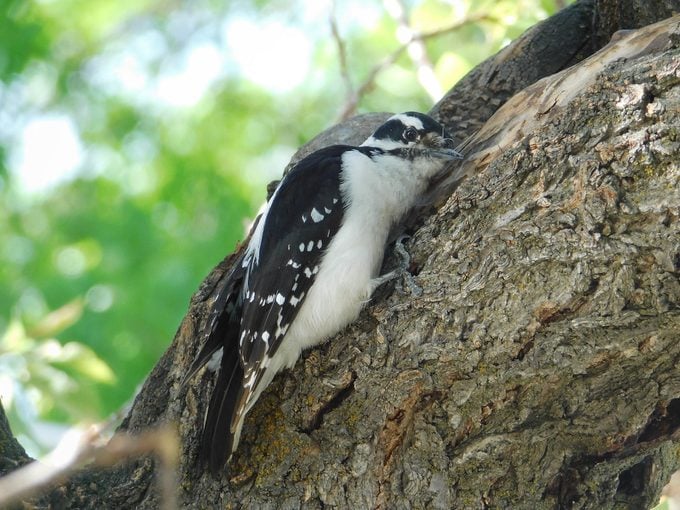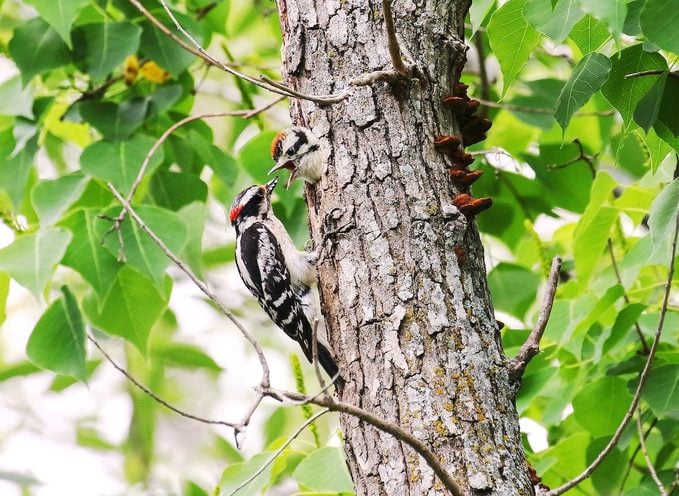Do Woodpeckers Kill or Damage Trees?
Updated: Nov. 28, 2023
Woodpeckers serve an important role in controlling insects. Here's what you can do to keep them from becoming a threat to your trees.

Woodpeckers help and hurt trees. They help by devouring insects that injure trees, including ants, caterpillars and borers. They hurt trees because their pecking damages tree bark, leaving possible points of entry for disease. If the woodpecker pecking is extensive — for instance, wrapping entirely around a stem — it can girdle part of the tree, cutting off the flow of sap and killing the portion above the damage.
Learn to identify 11 types of woodpeckers.
Why Woodpeckers Are Pecking on Trees

So, why do woodpeckers peck? The primary reason is eating.
Sapsuckers peck small holes in search of tree sap. Other kinds of woodpeckers are searching for insects like ants, wood borers and bark lice. Often these insects are afflicting a tree that is already stressed from other factors. It may be diseased and dying, or dead and rotting. In effect, the damage has already been done.
When foraging for insects, woodpeckers drill at different depths. They may leave tiny rows of holes on living trees or huge craters in dead and rotting trees.
Ask the Experts

“My husband is worried about woodpeckers in the area. Do woodpeckers hurt trees?” asks reader Beth Pearson of Pauline, South Carolina.
Birding experts Kenn and Kimberly Kaufman say while it’s completely understandable to be concerned about these industrious birds hacking away, in reality, woodpeckers almost never damage healthy trees. In fact, they usually protect them by eating insects that would otherwise attack the tree.
Woodpeckers typically excavate their nest holes in trees or limbs that already are dead or that have internal issues like heartwood rot. When a woodpecker digs out a big section of living trunk or branch, it’s going after insects, such as beetle grubs or carpenter ants that already are damaging the tree. So attracting woodpeckers won’t put your treescape at risk.
Discover mind-blowing woodpecker facts you should know.
Other Reasons for Pecking

In the western region of the U.S., acorn woodpeckers peck away to make small cavities to store acorns for later use. These granaries, as they’re called, can contain hundreds or even thousands of small acorn-size cavities, which are used repeatedly to store the seeds.
Woodpeckers may also be excavating nesting and rooting cavities, making holes that are only slightly larger than the woodpecker itself and not a serious threat to healthy trees.
And finally, woodpeckers hammer away at a variety of surfaces — everything from wooden siding to metal gutters, downspouts and roof vents — to communicate with each other. The rapid and loud hammering, called drumming, is done by both sexes. It can serve any purpose, from proclaiming a territory to calling for a mate.
Meet the large, red crowned pileated woodpecker.
Prevent Woodpecker Damage to Trees
One way to protect trees is to wrap trunks in burlap or mesh to discourage pecking. You can also hang reflective steamers or tape, strips of aluminum foil or old CDs/DVDs on and near the tree trunk. Woodpeckers (and other birds) are scared off by the dancing light and reflections.
A short-term solution is to station a plastic owl nearby and reposition it every few days so woodpeckers don’t get used to it. Or try distracting them from foraging on the tree with a tempting slab of suet placed elsewhere.
What foods do woodpeckers eat?
The Real Threat
Although tree damage is a concern, many homeowners are more worried about woodpecker damage to their house, particularly those with cedar siding. Because woodpeckers are a protected species and cannot be legally harmed, your best bet is to use a preventive measure or an exclusionary tactic, such as hanging up bird netting.
If you hear drumming on your house, inspect the siding and eaves. Immediately cover any damage with lightweight sheet metal or hardware cloth to discourage a repeat visit.
Next, learn how to tell the difference between downy vs hairy woodpeckers.




















